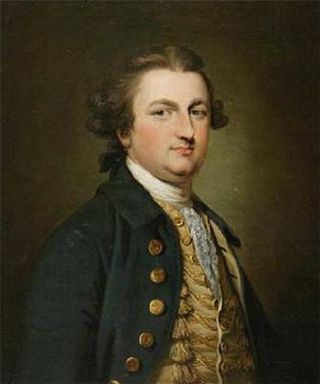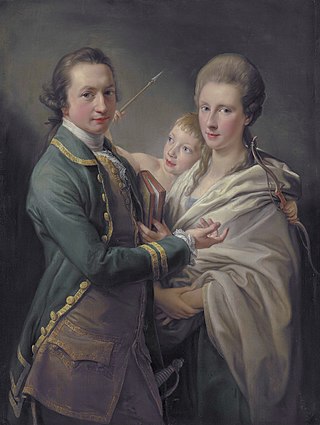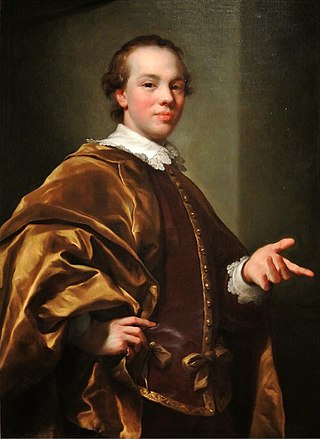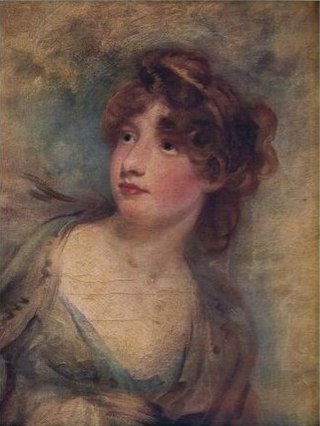Related Research Articles

General Henry Dundas, 3rd Viscount Melville GCB was a senior British Army officer and peer.

Henry Somerset, 5th Duke of Beaufort was an English courtier and politician. Styled the Marquess of Worcester from 1746, at his father's death on 28 October 1756, he succeeded him as 5th Duke of Beaufort, 7th Marquess of Worcester, 11th Earl of Worcester, and 13th Baron Herbert.

Vice-Admiral Sir Richard Saunders Dundas, was a Royal Navy officer. As a captain, he took part in the capture of the Bogue forts in January 1841, during the First Opium War. He was appointed to the command of the Fleet in the Baltic Sea, in succession to Sir Charles Napier, in February 1855 and led the naval support during the latter stages of the Crimean War, enforcing a strict blockade and carrying out the bombardment of Sveaborg in August 1855. He was appointed First Naval Lord in the first Palmerston ministry in November 1857 and then, after stepping down to be Second Naval Lord during the second Derby–Disraeli ministry, he stepped up again to become First Naval Lord in the second Palmerston ministry in June 1859, remaining in office until his death. The prime minister described Dundas as "a most distinguished officer".

Samuel Hood, 2nd Baron Bridport, of Redlynch House in Wiltshire, of Cricket House at Cricket St Thomas in Somerset, and of 12 Wimpole Street in Westminster, was a British politician and peer.
Adam Haldane-Duncan, 2nd Earl of Camperdown, styled Viscount Duncan between 1831 and 1859, was a British nobleman and politician.
William Power Keating Trench, 1st Earl of Clancarty was an Irish aristocrat and politician and later United Kingdom statesman at the time of the Act of Union. His family, through his son Richard, became prominent and hereditary members of the Netherlands' nobility.

Charles William Wentworth Fitzwilliam, 5th Earl Fitzwilliam in the peerage of Ireland, and 3rd Earl Fitzwilliam in the peerage of Great Britain, was a British nobleman and politician. He was president three times of the Royal Statistical Society in 1838–1840, 1847–1849, and 1853–1855; and president of the British Association for the Advancement of Science in its inaugural year (1831–2).

Thomas Taylour, 1st Earl of Bective, KP, PC (Ire) was an Irish peer and politician.

Arthur Saunders Gore, 2nd Earl of Arran, KP, PC (Ire), styled The Honourable Arthur Gore from 1758 to 1762 and Viscount Sudley from 1762 to 1773, was an Irish peer and politician.

Charlotte Mary Hood, Baroness Bridport, 3rd Duchess of Bronte was an English aristocrat who inherited an Italian dukedom and estate between Bronte and Maniace in Sicily.

John Hope, 2nd Earl of Hopetoun was a Scottish aristocrat.

Sir Andrew Agnew, 8th Baronet DL was a Scottish politician and baronet.

John Stewart, 7th Earl of Galloway,, styled Viscount Garlies from 1747 until 1773, was a British peer who became the 7th Earl of Galloway in 1773 and served as a Member of Parliament from 1761 to 1773.

Nathaniel Curzon, 1st Baron Scarsdale of Kedleston Hall, Derbyshire was an English Tory politician and peer.

Anne Stewart, Countess of Galloway, was the wife of John Stewart, 7th Earl of Galloway.

Jane Fane, Countess of Westmorland, formerly Jane Saunders, was the second wife of John Fane, 10th Earl of Westmorland.
Maria Ponsonby, Viscountess Duncannon, formerly Lady Maria Fane, was the wife of John Ponsonby, 4th Earl of Bessborough. She died before he inherited the earldom and thus was never Countess of Bessborough, but three of her sons were successively earls of Bessborough.
Hercules Langford Rowley PC was an Irish politician and landowner.
Mary Wood, Viscountess Halifax, formerly Mary Grey, was an English noblewoman. She was the wife of Charles Wood, 1st Viscount Halifax, and the mother of Charles Lindley Wood, 2nd Viscount Halifax.

Robert Dundas Haldane-Duncan, 1st Earl of Camperdown KT, styled Lord Duncan from 1797 to 1804 and known as Viscount Duncan from 1804 to 1831, was a British soldier and aristocrat.
References
- ↑ Mosley, Charles, editor. Burke's Peerage, Baronetage & Knightage, 107th edition, 3 volumes. Wilmington, Delaware, U.S.A.: Burke's Peerage (Genealogical Books) Ltd, 2003. Page 2663
- ↑ "Household of Queen Charlotte 1761-1818". Institute of Historical Research. Archived from the original on 15 March 2007. Retrieved 5 August 2018.
- ↑ Edward Salmon (1914). "Life of Admiral Sir Charles Saunders" . Retrieved 5 August 2018.
- ↑ Dictionary of National Biography , volume 50, page 329 - entry by William Wilfrid Webb.
- ↑ The Gentleman's Magazine (London, England). F. Jefferies. 1841. pp. 445–.